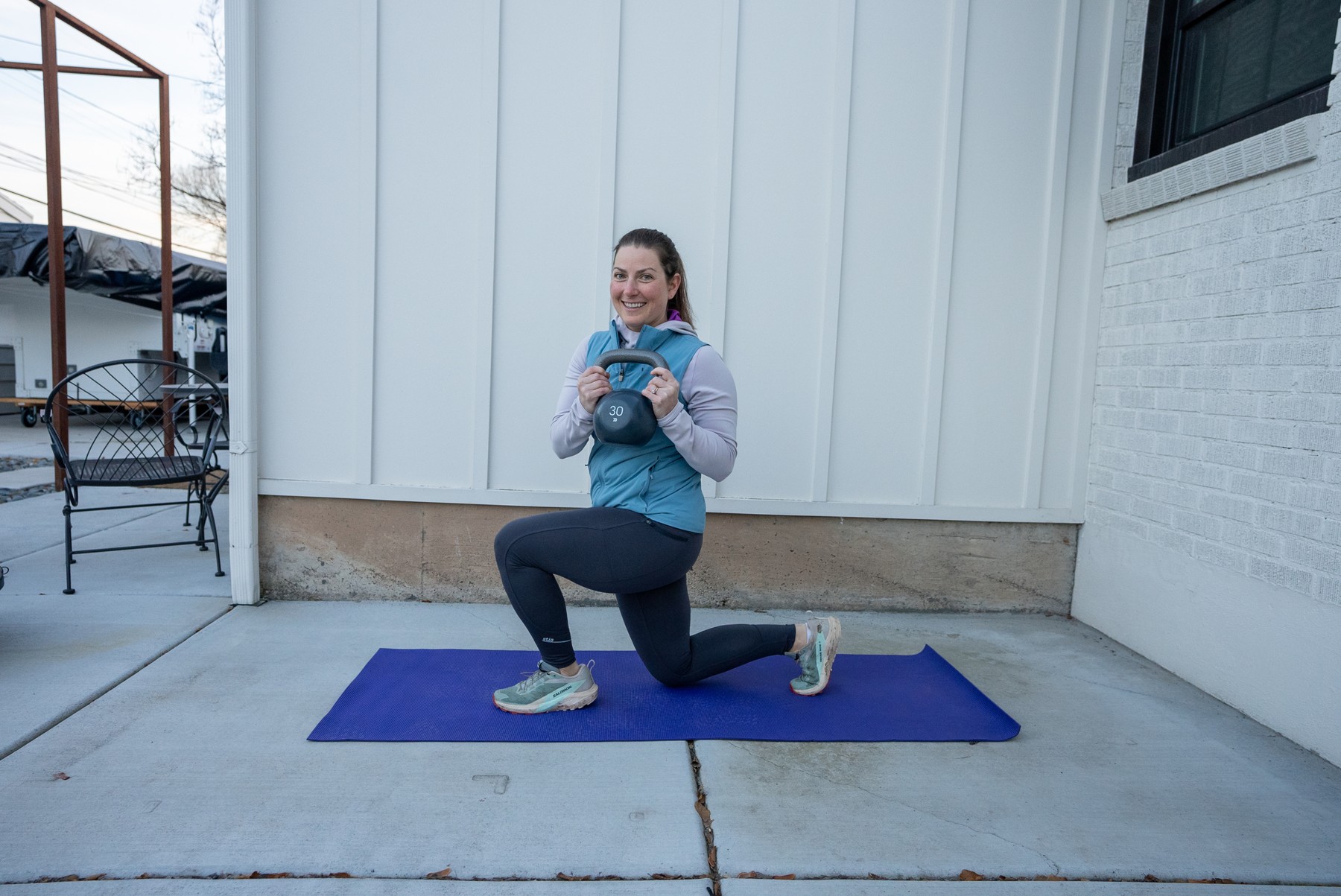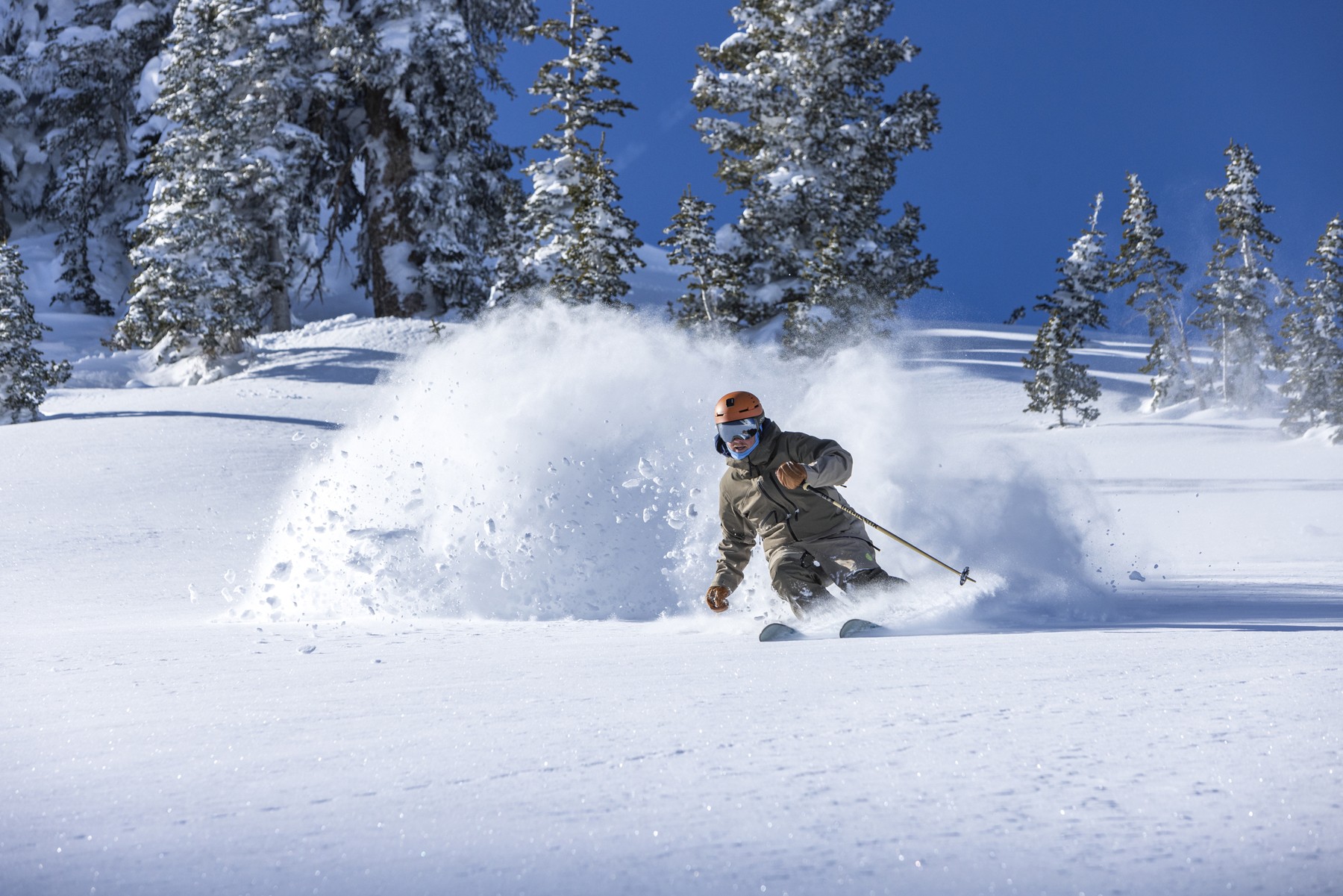You can feel it now—the late summer smell in the air, the shorter days, the cooler evenings and the crisp mornings. All signs point to autumn, and you know what that means: ski season is just around the corner! The excitement of the first snow is looming, but before you dust off your skis to hit the slopes, it's crucial to prepare your body for the demands of skiing. Now is the perfect time to start putting a concerted effort into your ski season training plan.
A well-rounded pre-season exercise program not only boosts your performance but also plays a key role in injury prevention, keeping you strong and resilient throughout the season.
In the sections below, you’ll gain a deeper understanding of the essential factors to consider when training for ski season, along with a sample workout plan designed to help you build the strength, power, and balance needed to carve up the slopes with confidence.

Foundations of a ski fitness program:
1. Power and Strength
Power and strength are the foundations of strong skiing. The major muscle groups to focus on for strength training for ski season include the glutes, hamstrings, quads, and trunk (this includes core and back muscles). Exercises like squats, lunges, Romanian deadlifts, and planks should be staples in your workout routine.
Plyometrics are also an important piece of the ski preparation puzzle. Focus on explosive movements that mimic the dynamic actions involved in skiing – think box jumps, lateral bounding, and lunge jumps. Incorporating plyometric exercises and strength training into your routine 3-4 times per week is essential.
2. Cardiovascular Fitness
Skiing demands both endurance and quick bursts of energy. Interval training, which alternates between periods of intense activity and rest, is an effective way to build cardiovascular fitness and mimic the stop-and-go nature of skiing. When building a cardiovascular program specific for skiing, ensure it lasts more than 45 minutes and includes 1-2 minute high-intensity intervals. Include at minimum 2 days of cardiovascular training into your pre-season program.
3. Neuromuscular Control and Balance Training
Skiing requires excellent neuromuscular control and balance. Balance training exercises, such as single-leg balance and dynamic balance drills, should be incorporated to enhance stability, proprioception, and coordination. A fun addition to balance training is inline skating. Inline skating is a great cross-training activity that closely simulates the movements of skiing, particularly in short turns. It helps improve balance, coordination, and the strength of the muscles used while skiing. Include these exercises in either your power and strength days, or your cardio days, whichever seems best for your individual needs.
7-Day Pre-Season Training Plan for Alpine Skiing
Day 1: Strength & Power
Warm-up: 10 minutes of dynamic warm-up (see below) or light cardio
Exercise Routine:
- Back Squats: 4 sets of 8 reps
- Glute-Ham Raises (Nordic Hamstring Curls): 4 sets of 8 reps
- Tuck Jumps: 3 sets of 15 reps
- Lateral Bounding: 3 sets of 15 bounds (each side)
- Lunge Jumps: 3 sets of 15 reps (each leg)
Cool Down: 5-10 minutes of yoga, pilates, or stretching focusing on the lower body
Day 2: Cardio & Balance
Warm-up: 5-10 minutes of easy jogging or cycling (whichever you plan on doing your intervals)
Exercise Routine:
- Interval Training: 45 minute run, inline skating, or cycling intervals: Start at 30 seconds sprint followed by 90 seconds rest, progressing to 60 seconds sprint/60 seconds rest, then 90 second sprint/30 second rest - (Tip: allow heart rate to reduce at least 20% between intervals)
- Single-Leg Balance on Bosu Ball: 3 sets of 1 minute per leg
- Agility Ladder Drills: 5 sets of 1-minute drills
Cool Down: 5-10 minutes of yoga, pilates or stretching
Day 3: Strength & Power
Warm-up: 10 minutes of dynamic warm-up, yoga, or light cardio
Exercise Routine:
- Single Leg Romanian Deadlifts: 4 sets of 8 reps (each side)
- Bulgarian Split Squats: 4 sets of 8 reps per leg
- Tuck Jumps: 3 sets of 15 reps
- Lateral Bounding: 3 sets of 15 bounds (each side)
- Lunge Jumps: 3 sets of 15 reps (each leg)
Cool Down: 5-10 minutes of yoga, pilates, or stretching focusing on the lower body
Day 4: Cardio & Balance
Warm-up: 5-10 minutes of light cycling, jogging, or rowing
Exercise Routine:
- Mountain Biking, Inline Skating, or Interval Running: 30-45 minutes
- Balance Drills on Balance Board: 4 sets of 2 minutes
- Single-Leg Hops on Bosu Ball: 3 sets of 10 reps per leg
Cool Down: 5-10 minutes of yoga, pilates, or stretching focusing on the lower body
Day 5: Strength & Power
Warm-up: 10 minutes of dynamic warm-up, yoga, or light cardio
Exercise Routine:
- Front Squats: 4 sets of 8 reps
- Glute-Ham Raises (Nordic Hamstring Curls): 4 sets of 8 reps
- Tuck Jumps: 3 sets of 15 reps
- Lateral Bounding: 3 sets of 15 bounds (each side)
- Lunge Jumps: 3 sets of 15 reps (each leg)
Cool Down: 5-10 minutes of yoga, pilates, or stretching focusing on the lower body
Day 6: Core & Balance
Warm-up: 10 minutes of dynamic warm-up, yoga, or light cardio
Exercise Routine:
- Side Planks: 3 sets of 60 seconds per side
- Side Plank Clamshells: 3 sets of 15 reps per side
- Marching Bridges: 3 sets of 15 reps
- Back Planks: 3 sets of 60 seconds
- Dead Bugs: 3 sets of 15 reps per side
Cool Down: 5-10 minutes of yoga, pilates, or stretching focusing on the lower body
Day 7: Active Recovery
Activity Options:
- Light Yoga or Stretching: 30-45 minutes
- Easy Hike, Cycle, or Swim: 30-45 minutes
- Inline Skating: 30-45 minutes
Focus: Relaxation and rejuvenation, promoting muscle recovery, if this means taking a full day off go for it!
Dynamic warm-up: 1 minute of each exercise with a 30-second break
- Knee to chest walk
- Leg swings walk
- Inchworm
- Rotational walking lunge
- Side lunges, spiderman crawl
- Tuck jump with knees up
- Tuck jump with a heel kick
- Single-leg hops

When to Start
Start this program at least 8-12 weeks before your first day on snow, typically around mid-September to early October. This timeline allows your body to build strength, improve cardiovascular fitness, and enhance neuromuscular control, which are critical for skiing. If you are going on a ski trip for a limited amount of time, and are looking to optimize performance while on your vacation, take the week before your trip off as a de-load week to allow your muscles to be fully rejuvenated in preparation for your vacation.
Disclaimer: Before beginning any exercise program, it is important to consult with a medical professional to ensure that the exercises are safe and appropriate for your individual health condition. This content is for informational purposes only and is not intended to be a substitute for professional medical advice, diagnosis, or treatment. Always seek the advice of your physician or other qualified health provider with any questions you may have regarding a medical condition or before starting a new exercise regimen.
References:
1. Hildebrandt, C., Oberhoffer, R., Raschner, C., Müller, E., Fink, C., & Steidl-Müller, L. (2021). Training load characteristics and injury and illness risk identification in elite youth ski racing: A prospective study. *J Sport Health Sci.*, 10(2), 230-236. doi: 10.1016/j.jshs.2020.03.009
2. Westin, M., Harringe, M. L., Engström, B., Alricsson, M., & Werner, S. (2020). Prevention of Anterior Cruciate Ligament Injuries in Competitive Adolescent Alpine Skiers. *Front Sports Act Living.*, 2, 11. doi: 10.3389/fspor.2020.00011
3. Strutzenberger, G., Ellenberger, L., Bruhin, B., Frey, W. O., Scherr, J., & Spörri, J. (2022). Deadbug Bridging Performance in 6- to 15-Year-Old Competitive Alpine Skiers-A Cross-Sectional Study. *Biology (Basel).*, 11(2), 329. doi: 10.3390/biology11020329
4. Fröhlich, S., Pazeller, S., Cherati, A. S., Müller, E., Frey, W. O., & Spörri, J. (2020). Overuse injuries in the knee, back and hip of top elite female alpine skiers during the off-season preparation period: prevalence, severity and their association with traumatic preinjuries and training load. *BMJ Open Sport Exerc Med.*, 6(1), e000892. doi: 10.1136/bmjsem-2020-000892
5. Cigrovski, V., Očić, M., Bon, I., Matković, B., & Šagát, P. (2022). Inline Skating as an Additional Activity for Alpine Skiing: The Role of the Outside Leg in Short Turn Performance. *Int J Environ Res Public Health.*, 19(3), 1747. doi: 10.3390/ijerph19031747
6. Zeglinksi, C. M., Swanson, S. C., Self, B. P., & Greenwald, R. M. (1998). Muscle activity in the slalom turn of alpine skiing and in-line skating. *Int J Sports Med.*, 19(7), 447-454. doi: 10.1055/s-2007-971943
7. Heinrich, D., van den Bogert, A. J., Mössner, M., & Nachbauer, W. (2023). Model-based estimation of muscle and ACL forces during turning maneuvers in alpine skiing. *Sci Rep.*, 13(1), 9026. doi: 10.1038/s41598-023-35775-4
8. Hébert-Losier, K., & Holmberg, H. C. (2013). What are the exercise-based injury prevention recommendations for recreational alpine skiing and snowboarding? *Sports Med.*, 43(5), 355-366. doi: 10.1007/s40279-013-0032-2
9. Dickson, T. J., Witchalls, J., Terwiel, F. A., Jaros, R., Waddington, G., & McGrath, B. (2021). Proprioceptive abilities improve in expert skiers and snowboarders from early-season to mid-season. *J Sci Med Sport.*, 24(10), 1021-1025. doi: 10.1016/j.jsams.2020.05.011
10. Andreeva, A., Melnikov, A., Skvortsov, D., Akhmerova, K., Vavaev, A., Golov, A., Draugelite, V., Nikolaev, R., Chechelnickaia, S., Zhuk, D., Bayerbakh, A., Nikulin, V., & Zemková, E. (2021). Postural stability in athletes: The role of sport direction. *Gait Posture.*, 89, 120-125. doi: 10.1016/j.gaitpost.2021.07.005
11. Słomka, K. J., Pawłowski, M., Michalska, J., Kamieniarz, A., Brachman, A., & Juras, G. (2018). Effects of 8-Week Complex Balance Training in Young Alpine Skiers: A Pilot Study. *Biomed Res Int.*, 2018, 6804534. doi: 10.1155/2018/6804534
12. Burtscher, M. (2017). Risk and Protective Factors for Sudden Cardiac Death During Leisure Activities in the Mountains: An Update. *Heart Lung Circ.*, 26(8), 757-762. doi: 10.1016/j.hlc.2017.01.010
13. Niebauer, J., & Burtscher, M. (2021). Sudden Cardiac Death Risk in Downhill Skiers and Mountain Hikers and Specific Prevention Strategies. *Int J Environ Res Public Health.*, 18(4), 1621. doi: 10.3390/ijerph18041621















